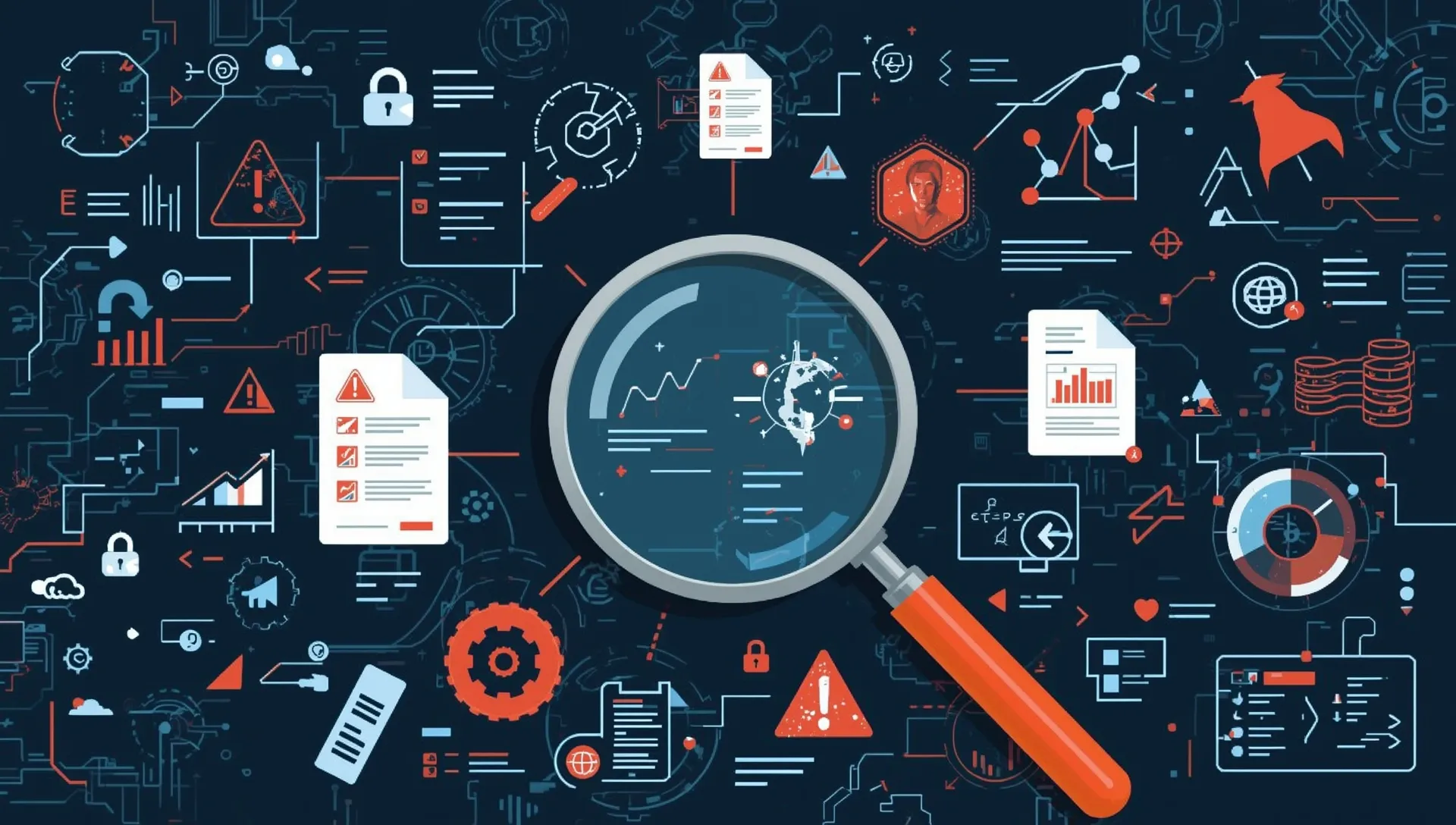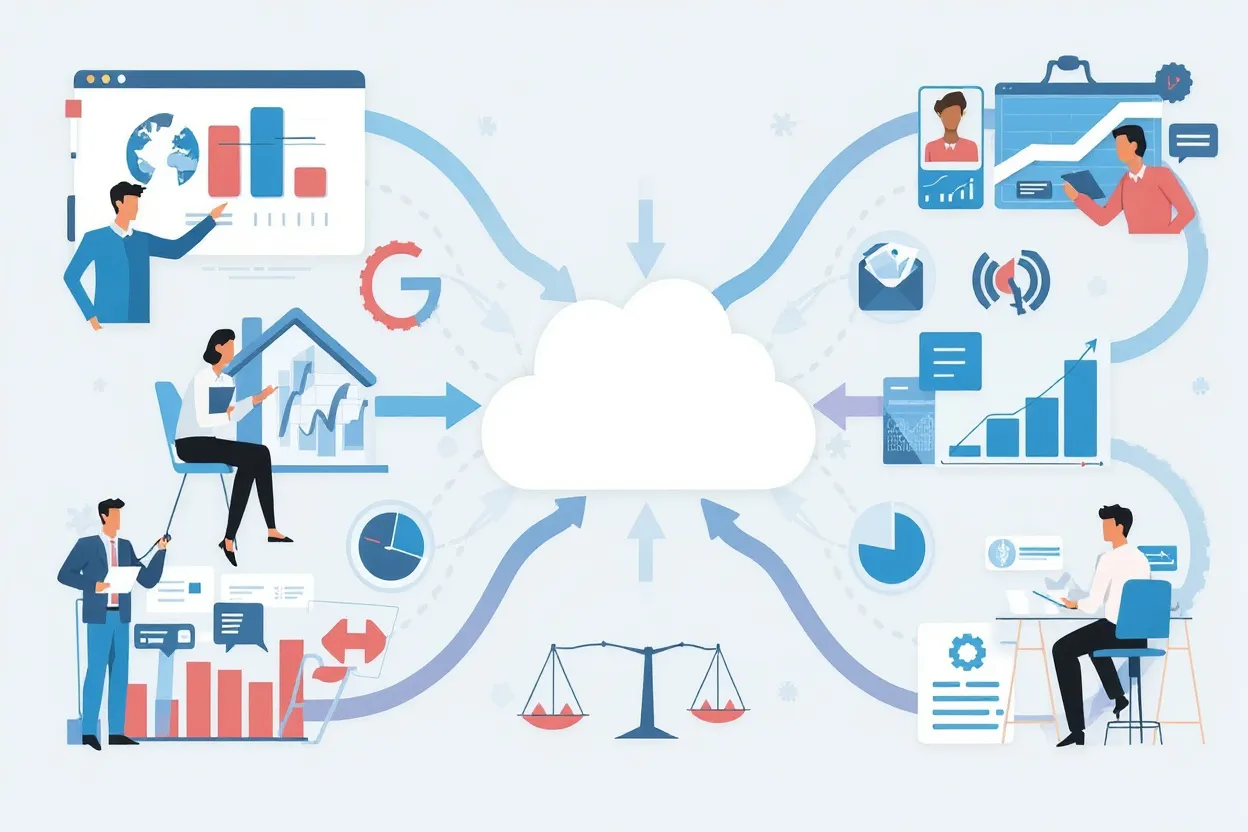
Managing technical risk during rapid growth: what keeps CTOs awake
Rapid business growth creates technical risks that can destroy companies overnight. After helping dozens of fast-growing startups navigate hypergrowth, here's how to identify, prioritize, and manage technical risk without killing momentum.
“We’re growing 30% month-over-month. Our systems are holding up… for now.”
I hear this from CTOs constantly. Their business is experiencing amazing growth, but they’re losing sleep over the technical risks multiplying faster than they can address them. The database is approaching capacity limits. The payment system crashed twice last month. Their best engineer just mentioned they’re getting recruiter calls. Customer support is drowning in bug reports that seem to multiply daily.
The pressure is intense: every technical decision could either enable continued growth or become the bottleneck that kills momentum. When everything feels critical, how do you decide what actually needs immediate attention?
After helping dozens of fast-growing companies navigate hypergrowth challenges, I’ve learned that technical risk management during rapid growth is fundamentally different from risk management in stable environments. The key isn’t preventing all problems. It’s preventing the problems that could kill your business while maintaining the velocity that drives growth.
In this guide, I’ll share the framework I use to help CTOs and technical leaders identify, prioritize, and manage technical risks during periods of rapid growth without sacrificing the momentum that got them there.
The hypergrowth risk amplification effect
Rapid business growth doesn’t just create more technical challenges. It fundamentally changes how risks compound and interact with each other.
How growth amplifies technical risk
Scale multiplies small problems: A database query that takes 100ms with 1,000 users becomes a bottleneck with 50,000 users. Edge cases that affected 0.1% of customers become customer support nightmares when your user base grows 10x.
Time compression accelerates consequences: In stable environments, you have weeks or months to address technical issues. During hypergrowth, problems that took months to develop can bring systems down in days.
Resource constraints limit response: Your engineering team is already stretched building features to support growth. Every hour spent on risk mitigation is an hour not spent on product development that could accelerate growth further.
Interdependency cascades: Systems that worked fine in isolation start failing when integrated at scale. Third-party services that handled your traffic six months ago now buckle under increased load.
The catastrophic failure patterns
I’ve seen specific patterns that destroy fast-growing companies:
The payment system collapse: A rapidly growing e-commerce startup hit a race condition in their payment processing during Black Friday traffic. The bug caused duplicate charges and failed transactions. Result: $2M in lost revenue, thousands of angry customers, and six months rebuilding customer trust.
The data corruption cascade: A SaaS company’s database began corrupting user data due to a concurrency bug that only manifested under high load. By the time they detected it, 15% of their customer data was affected. Result: 40% customer churn and near-bankruptcy.
The key person bottleneck: A fintech startup’s entire authentication system was understood by only one engineer. When that person left during a critical scaling period, it took three months to rebuild institutional knowledge. Result: six months of delayed feature development and competitive disadvantage.
The growth paradox
The cruel irony: the same rapid growth that creates these risks also provides the resources and market opportunity to address them. But only if you can identify and prioritize correctly.
Companies that master technical risk management during growth don’t just survive hypergrowth. They emerge stronger with more robust systems, better processes, and competitive advantages that are hard for slower-moving competitors to replicate.
Facing a leadership challenge right now?
Don't wait for the next fire to burn you out. In a 30-minute discovery call we'll map your blockers and outline next steps you can use immediately with your team.
The business-impact risk assessment framework
Traditional risk management frameworks focus on technical probability and impact. During hypergrowth, you need to prioritize based on business impact and timing.
Risk categorization matrix
Category 1: Business-killing risks
- Definition: Issues that could stop revenue generation or cause irreparable business damage
- Examples: Payment system failures, security breaches exposing customer data, complete service outages during critical business periods
- Response time: Immediate (within hours)
- Resource allocation: All hands on deck, external resources if needed
Category 2: Growth-limiting risks
- Definition: Issues that prevent customer acquisition or cause significant customer churn
- Examples: Performance problems affecting user experience, onboarding failures, integration outages affecting major customers
- Response time: Within days
- Resource allocation: Dedicated engineering team, planned sprint work
Category 3: Efficiency-reducing risks
- Definition: Issues that slow team productivity or increase operational overhead
- Examples: Technical debt that slows feature development, manual processes that don’t scale, poor tooling that reduces developer productivity
- Response time: Within weeks or months
- Resource allocation: Background work, dedicated improvement sprints
Category 4: Future risks
- Definition: Issues that could become problems as growth continues
- Examples: Architectural limitations that will cause problems at 10x scale, technical debt that will slow development in the future
- Response time: Planned technical roadmap
- Resource allocation: Architecture planning, technical debt budgeting
The business impact calculation
For each identified risk, calculate business impact using this framework:
Revenue impact: How much revenue could be lost if this risk materializes?
- Direct revenue loss from system unavailability
- Customer churn from poor experience
- Lost deals from feature limitations
Time impact: How long would it take to recover from this risk?
- System restoration time
- Customer trust rebuilding time
- Competitive position recovery time
Probability assessment: What’s the likelihood of this risk occurring in the next 30/90/180 days?
- Based on current growth trajectory
- Considering system load patterns
- Including external dependencies
Mitigation cost: How much would it cost to address this risk?
- Engineering time required
- Infrastructure or tool costs
- Opportunity cost of other work
The prioritization formula
Risk Priority Score = (Revenue Impact × Probability) / (Time to Fix + Mitigation Cost)
This formula helps you identify risks that have high business impact, reasonable probability, and can be addressed efficiently.
The rapid growth risk inventory
Based on patterns I’ve seen across dozens of high-growth companies, here are the specific risks to monitor during hypergrowth:
Infrastructure and scalability risks
Database performance degradation
- Warning signs: Query response times increasing, connection pool exhaustion, high CPU utilization
- Business impact: Slow user experience leading to churn, potential data corruption
- Mitigation strategies: Read replicas, query optimization, database sharding preparation
Third-party service dependencies
- Warning signs: Increased API error rates, timeout increases, service limit warnings
- Business impact: Feature unavailability, poor user experience, potential revenue loss
- Mitigation strategies: Multiple vendor relationships, circuit breakers, graceful degradation
Auto-scaling limitations
- Warning signs: Manual intervention required for traffic spikes, resource exhaustion events
- Business impact: Service outages during peak traffic, lost revenue opportunities
- Mitigation strategies: Predictive scaling, load testing, capacity planning
Security and compliance risks
Data protection vulnerabilities
- Warning signs: Increased attack attempts, security scanning alerts, compliance audit findings
- Business impact: Regulatory fines, customer trust loss, potential business shutdown
- Mitigation strategies: Security audits, automated vulnerability scanning, compliance monitoring
Access control sprawl
- Warning signs: Unclear permission assignments, former employee access, overprivileged accounts
- Business impact: Data breach risk, insider threats, compliance violations
- Mitigation strategies: Identity management automation, regular access reviews, principle of least privilege
API security gaps
- Warning signs: Unauthenticated API usage, rate limiting bypasses, data exposure through APIs
- Business impact: Data breaches, service abuse, competitive intelligence loss
- Mitigation strategies: API gateways, authentication enforcement, rate limiting implementation
Operational and team risks
Key person dependencies
- Warning signs: Critical knowledge concentrated in single individuals, undocumented systems
- Business impact: Development bottlenecks, operational failures, knowledge loss
- Mitigation strategies: Documentation requirements, pair programming, cross-training
Deployment and release risks
- Warning signs: Manual deployment processes, lack of rollback capabilities, long release cycles
- Business impact: Extended outages, slow feature delivery, competitive disadvantage
- Mitigation strategies: CI/CD automation, feature flags, blue-green deployments
Monitoring and alerting gaps
- Warning signs: Problems discovered by customers, delayed incident response, unclear system status
- Business impact: Extended downtime, poor customer experience, reactive problem solving
- Mitigation strategies: Comprehensive monitoring, intelligent alerting, incident response automation
Coaching for Tech Leads & CTOs
Ongoing 1:1 coaching for startup leaders who want accountability, proven frameworks, and a partner to help them succeed under pressure.
Building risk management into rapid growth
The key to successful risk management during hypergrowth is building it into your existing growth processes rather than creating separate risk management overhead.
Integration with product development
Architecture review gates
- Process: Include risk assessment in major feature design reviews
- Focus: Identify scaling bottlenecks and failure modes before development
- Output: Risk mitigation requirements built into feature specifications
Sprint planning risk assessment
- Process: Include technical risk review in sprint planning
- Focus: Balance feature development with risk mitigation work
- Output: Dedicated time allocation for addressing high-priority risks
Post-incident learning
- Process: Systematic analysis of production incidents for risk pattern identification
- Focus: Prevent similar incidents while identifying broader risk categories
- Output: Updated risk inventory and mitigation strategies
Operational risk management
Proactive capacity planning
- Process: Regular assessment of system capacity relative to growth projections
- Focus: Identify scaling bottlenecks before they impact customers
- Output: Infrastructure scaling roadmap aligned with business growth
Automated risk monitoring
- Process: Implement automated monitoring for known risk indicators
- Focus: Early detection of problems before they impact business operations
- Output: Automated alerting and response for common risk scenarios
Cross-functional risk communication
- Process: Regular risk status communication to business stakeholders
- Focus: Align technical risk priorities with business priorities
- Output: Shared understanding of risk trade-offs and mitigation timelines
Team and knowledge management
Knowledge distribution strategies
- Process: Systematic documentation and cross-training for critical systems
- Focus: Reduce key person dependencies while maintaining development velocity
- Output: Resilient team structure with distributed knowledge
Skill development planning
- Process: Identify skill gaps that create operational risks
- Focus: Build team capabilities needed for successful scaling
- Output: Training and hiring plans aligned with technical risk mitigation
External expertise access
- Process: Identify areas where external expertise could accelerate risk mitigation
- Focus: Strategic use of consultants and contractors for specialized risk areas
- Output: Consultant relationships and external support strategies
The mitigation strategy playbook
Different types of risks require different mitigation approaches. Here’s the strategic playbook I use:
For immediate business-killing risks
Crisis response protocol:
- Immediate stabilization: Stop the bleeding with whatever resources necessary
- Impact assessment: Understand customer and business impact scope
- Communication strategy: Proactive communication to customers and stakeholders
- Root cause analysis: Systematic investigation to prevent recurrence
- System strengthening: Implement safeguards to prevent similar failures
Resource allocation: All available engineering resources, external help if needed, business leadership involvement
For growth-limiting risks
Systematic mitigation approach:
- Impact quantification: Calculate customer experience and revenue impact
- Solution design: Design mitigation that improves long-term resilience
- Implementation planning: Balance mitigation work with feature development
- Progress monitoring: Track mitigation effectiveness and business impact
- Scaling preparation: Ensure solutions work at projected future scale
Resource allocation: Dedicated engineering team, planned sprint work, cross-functional coordination
For efficiency-reducing risks
Continuous improvement integration:
- Process identification: Identify manual processes and inefficiencies
- Automation opportunities: Design systems that eliminate manual overhead
- Tool and platform investment: Invest in tools that improve team productivity
- Measurement and optimization: Track efficiency improvements and iterate
- Culture development: Build practices that prevent future efficiency risks
Resource allocation: Background work, improvement sprints, platform team development
For future risks
Strategic planning approach:
- Architecture evolution: Design future architecture that addresses scaling needs
- Technical debt management: Systematic approach to managing and reducing technical debt
- Technology evaluation: Assess new technologies that could improve resilience
- Skill development: Build team capabilities needed for future challenges
- Partnership strategy: Identify external relationships that could reduce future risks
Resource allocation: Architecture planning time, technical roadmap integration, strategic initiative budgets
Measuring risk management effectiveness
Traditional risk metrics don’t capture the business context needed during rapid growth. Here are the metrics that actually matter:
Leading indicators
Risk identification velocity: How quickly you identify new risks as they emerge
- Target: New risks identified and assessed within one week
- Measurement: Time from risk emergence to risk register inclusion
Mitigation planning time: How quickly you develop mitigation plans for identified risks
- Target: High-priority risks have mitigation plans within 48 hours
- Measurement: Time from risk identification to approved mitigation plan
Cross-functional risk awareness: How well business stakeholders understand technical risks
- Target: Business leaders can articulate top 3 technical risks
- Measurement: Regular surveys and risk communication effectiveness
Lagging indicators
Business impact prevention: Revenue and customer impact avoided through risk mitigation
- Target: Zero business-killing incidents, minimal growth-limiting incidents
- Measurement: Incident severity and business impact tracking
System resilience improvement: How well systems handle increased load and usage
- Target: Consistent performance as business grows
- Measurement: Performance metrics relative to business growth metrics
Team confidence and retention: How confident the team feels about system stability
- Target: High team confidence in system resilience
- Measurement: Team surveys and retention metrics
Business alignment metrics
Feature delivery velocity: Ensuring risk management doesn’t slow feature development
- Target: Consistent feature delivery velocity despite risk mitigation work
- Measurement: Story points or features delivered per sprint
Customer satisfaction trends: Customer experience impact of risk management efforts
- Target: Improving customer satisfaction as risks are mitigated
- Measurement: NPS, support ticket trends, customer feedback
Competitive position maintenance: Ensuring risk management doesn’t create competitive disadvantage
- Target: Maintaining or improving competitive position
- Measurement: Market share, feature parity analysis, customer win/loss feedback
Got a leadership question?
Share your toughest challenge and I might feature it in an upcoming episode. It's free, anonymous, and you'll get extra resources in return.
Common risk management mistakes during growth
After seeing hundreds of risk management implementations, I’ve identified patterns that consistently lead to failure:
Mistake #1: treating all risks equally
What it looks like: Spending equal time and resources on all identified risks regardless of business impact.
Why it fails: Limited resources get spread too thin, and critical risks don’t get adequate attention.
Better approach: Use business impact prioritization to focus resources on risks that could actually hurt the business.
Mistake #2: perfectionist risk mitigation
What it looks like: Trying to eliminate all risks completely before moving forward.
Why it fails: Perfect risk mitigation takes too long and kills growth momentum.
Better approach: Accept that some residual risk is acceptable if the mitigation cost exceeds the business impact.
Mistake #3: risk management theater
What it looks like: Creating extensive risk documentation and processes that don’t actually improve resilience.
Why it fails: Resources spent on documentation instead of actual risk reduction.
Better approach: Focus on practical risk mitigation that actually improves system resilience and business outcomes.
Mistake #4: ignoring opportunity costs
What it looks like: Having the entire engineering team focus on risk mitigation during critical growth periods.
Why it fails: Slows business growth and potentially creates competitive disadvantage.
Better approach: Balance risk mitigation with feature development based on business priorities and growth stage.
Mistake #5: reactive risk management
What it looks like: Only addressing risks after they cause business impact.
Why it fails: Damage is already done by the time reactive measures are implemented.
Better approach: Proactive risk identification and mitigation based on growth trajectory and business requirements.
Building a resilient growth culture
Sustainable risk management during rapid growth requires building risk awareness into team culture rather than treating it as a separate discipline.
Cultural practices that support growth and resilience
Failure-informed development:
- Regular post-incident reviews that focus on system improvement rather than blame
- Sharing of near-miss events and close calls across the team
- Celebration of proactive risk identification and mitigation
Business-context awareness:
- Help engineering teams understand business impact of technical decisions
- Include business metrics in technical discussions and planning
- Connect technical risk management to business success and growth
Continuous learning orientation:
- Encourage experimentation with new technologies and approaches that could reduce risk
- Invest in team skill development for areas that are currently risky
- Build learning from other companies’ scaling experiences into team knowledge
Leadership practices that enable balanced risk management
Strategic risk communication:
- Regular communication about risk priorities and business context
- Clear decision-making about risk trade-offs and resource allocation
- Transparent communication about risk management decisions to business stakeholders
Resource allocation transparency:
- Clear budgeting for risk mitigation work alongside feature development
- Visible trade-off decisions between risk mitigation and business development
- Regular reassessment of risk priorities based on business changes
Long-term thinking integration:
- Include risk management in strategic planning and architecture decisions
- Balance short-term business pressure with long-term system resilience
- Invest in platform and infrastructure that supports sustainable growth
Conclusion: growing fast while staying resilient
Technical risk management during rapid growth isn’t about preventing all problems. It’s about preventing the problems that could kill your business while maintaining the velocity that drives growth.
The framework I’ve shared helps you:
- Prioritize risks based on business impact rather than technical severity
- Integrate risk management into growth processes rather than creating overhead
- Build sustainable practices that improve resilience without slowing development
- Make smart trade-offs between risk mitigation and feature development
- Measure success using business-aligned metrics
Your technical risk management action plan
Week 1-2: Risk assessment
- Identify current technical risks using the business impact framework
- Prioritize risks based on business impact and probability
- Assess current risk management practices and gaps
Month 1: High-priority risk mitigation
- Address any business-killing risks immediately
- Implement monitoring and alerting for growth-limiting risks
- Establish incident response procedures for critical systems
Month 2-3: Systematic risk management
- Build risk assessment into feature development processes
- Implement proactive monitoring for known risk indicators
- Establish regular risk review and communication practices
Months 4-6: Culture and process integration
- Build risk awareness into team culture and practices
- Establish sustainable risk management processes that scale with growth
- Create measurement and feedback loops for continuous improvement
Remember: The goal isn’t zero risk. It’s optimal risk management that enables sustainable growth. Some risks are worth taking for business velocity. Others could destroy your company overnight.
The companies that successfully navigate hypergrowth don’t avoid all technical risks. They get really good at identifying which risks matter, prioritizing based on business impact, and building resilience without sacrificing momentum.
Focus on preventing the problems that could kill your business. Accept some residual risk for problems that just create operational overhead. And always consider the opportunity cost of risk mitigation relative to business development.
When everything feels critical, systematic risk prioritization becomes your competitive advantage.
Facing a leadership challenge right now?
Don't wait for the next fire to burn you out. In a 30-minute discovery call we'll map your blockers and outline next steps you can use immediately with your team.
I’ve helped dozens of fast-growing companies build technical risk management practices that enable rather than hinder growth. If your team is struggling with technical risks during rapid scaling and wants to build systematic risk management without killing momentum, let’s discuss how to implement this framework for your specific situation.
📈 Join 2,000+ Tech Leaders
Get my weekly leadership insights delivered every Tuesday. Team scaling tactics, hiring frameworks, and real wins from the trenches.
Related Articles

Security compliance without the security theater: practical GDPR, SOC2, and HIPAA
Security compliance doesn't have to be expensive theater that slows down your business. Here's how to build genuine security practices that satisfy auditors, protect your business, and actually improve your operations instead of hindering them.

Technical due diligence red flags every investor should know
Avoid costly technical surprises in your startup investments. Learn the critical red flags and warning signs that experienced investors look for during technical due diligence, with practical frameworks for evaluating engineering teams, architecture decisions, and technical debt risks.

Why your best engineer makes a terrible technical lead
Promoting your strongest individual contributor to technical lead often backfires spectacularly. Here's why technical excellence doesn't predict leadership success, and how to identify engineers who can actually lead teams effectively.
